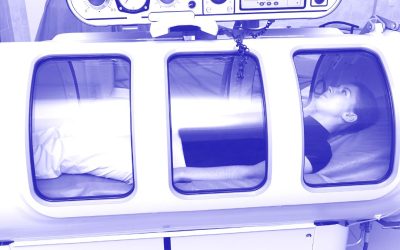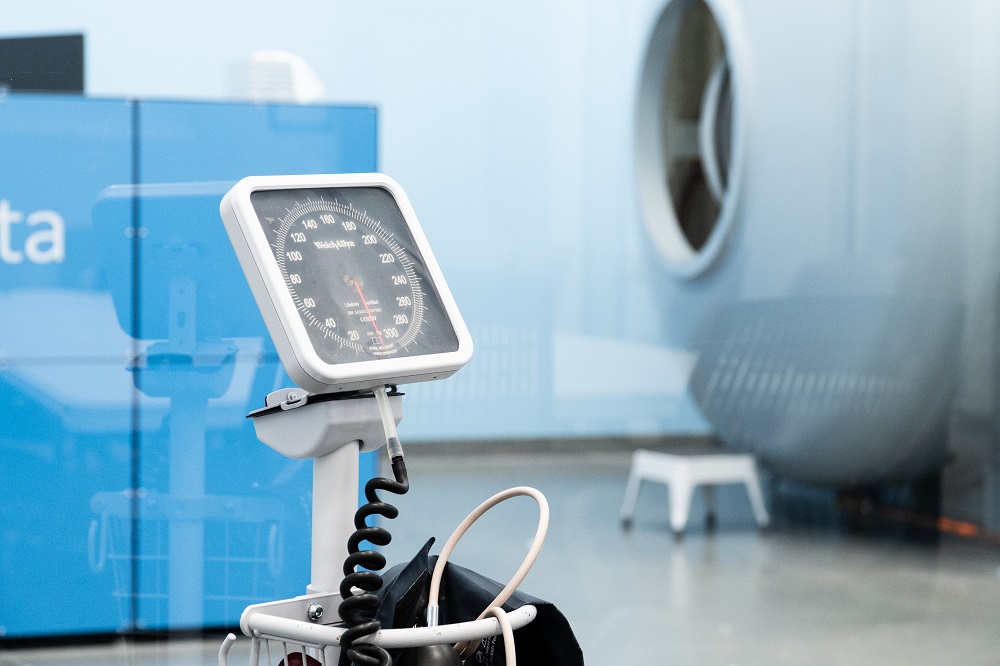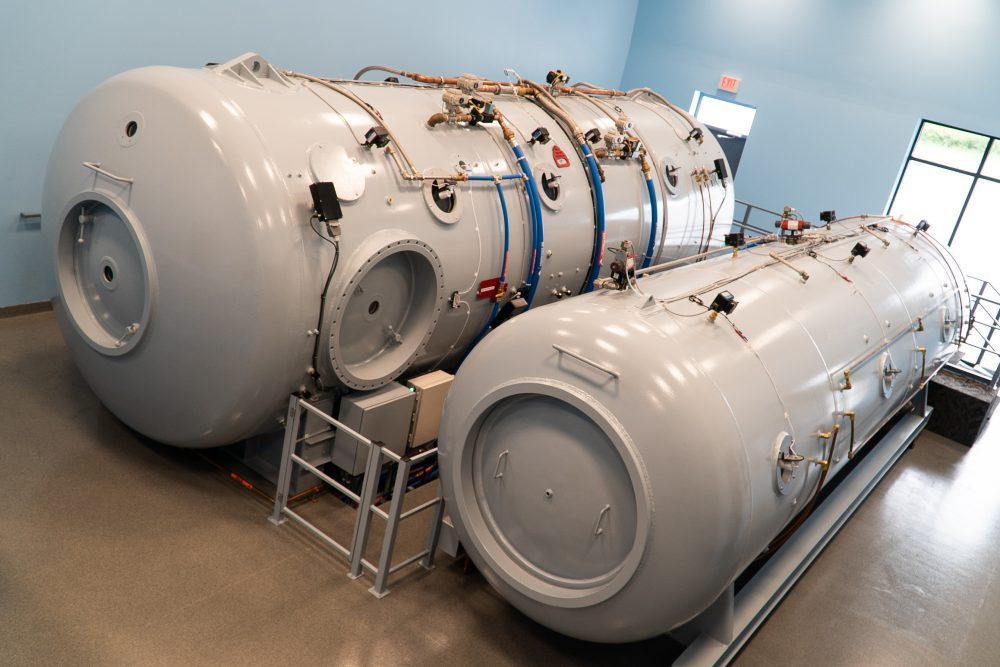This week, researchers also delivered their findings on the use of hyperbaric oxygen therapy as a treatment for Crohn’s disease. “Hyperbaric oxygen therapy (HBOT) delivers 100 percent oxygen in a pressurized chamber, increasing tissue oxygen levels and regulating...
Hyperbaric oxygen therapy for the treatment of perianal fistulas in Crohn’s disease
Abstract: BACKGROUND: Perianal fistulizing Crohn's disease (pCD) has a significant impact on patients' health and quality of life. Current treatment options have a relatively low success rate and a high recurrence risk. Positive effects of hyperbaric oxygen (HBO2)...
Recalcitrant Vulval and Perineal Crohn Disease Responding to Hyperbaric Oxygen Therapy.
Abstract: No Abstract Available Meah, Subramanian, Khirwadkar, Cope, Bell (2018). Recalcitrant Vulval and Perineal Crohn Disease Responding to Hyperbaric Oxygen Therapy. Journal of lower genital tract disease, 2018...
Hyperbaric oxygen therapy is an effective adjunctive treatment for severe perianal Crohn’s disease
Abstract: BACKGROUND: Perianal involvement occurs in about 30% of children with Crohn's disease (CD). Treatment of perianal CD requires a multidisciplinary approach with a combination of immunomodulatory therapy, antibiotics and surgery. Hyperbaric oxygen...
Adjunctive Hyperbaric Oxygen Therapy promotes successful healing in patients with refractory Crohn’s disease.
To investigate de adjunctive effect of Hyperbaric Oxygen Therapy in a group of patients with refractory Crohn’s disease. A total of 29 subjects with refractory Crohn’s disease were submitted to daily sessions of Hyperbaric Oxygen Therapy, in a 2800 Sechrist Monoplace Hyperbaric Chamber (Sechrist, USA) pressurized to 2.4 ATA. Each session lasted 2 hours. The endpoint was closure of enterocutaneous fistulas and complete healing of Pyoderma Gangrenosum and perineal Crohn’s disease. A total of 829 HBOT sessions were performed and no complications were noted. Overall success rate was 76% (22 cases). Pyoderma Gangrenosum and enterocutaneous fistulas had the highest successful healing rates (100% and 91%, respectively).
Hyperbaric oxygen therapy for chronic antibiotic-refractory ischemic pouchitis.
Hyperbaric oxygen therapy (HBOT) has been shown to be efficacious in treating various conditions, including perianal Crohn’s disease. Here we present a case of a 59-year-old male with a history of ulcerative colitis, who underwent a total proctocolectomy and two-stage J-pouch construction. He later developed chronic antibiotic-refractory pouchitis with endoscopic features of ischemia. At the completion of HOBT-a total of 20 sessions of 100% oxygen at 2.5-3.0 atmospheres absolute for 60-90 minutes per session-a repeat pouchoscopy showed marked improvement of endoscopic mucosal inflammation. HBOT is known to increase tissue oxygenation, reduce tissue hypoxia, alter inflammatory pathways and promote tissue healing.
Combining infliximab, anti-MAP and hyperbaric oxygen therapy for resistant fistulizing Crohn’s disease.
Fistulizing Crohn’s disease (CD) presents a therapeutic challenge as fistulae are notoriously difficult to heal. Mycobacterium avium ss paratuberculosis (MAP) treatment in CD is gaining attention. We evaluated healing of CD fistula(e) using a novel combination therapy. Nine consecutive patients who failed to heal fistulae on conventional treatment including anti-TNF, were treated with at least three doses of infliximab, 18-30 courses of hyperbaric oxygen therapy and anti-MAP antibiotics comprising rifabutin, clarithromycin and clofazimine. All patients achieved complete healing of fistulae by 6-28 weeks and follow-up for mean 18 months.
Enhanced colonic nitric oxide generation and nitric oxide synthase activity in ulcerative colitis and Crohn’s disease
Recent studies have suggested that nitric oxide (NO.), the product of nitric oxide synthase in inflammatory cells, may play a part in tissue injury and inflammation through its oxidative metabolism. In this study the colonic generation of oxides of nitrogen (NOx) and nitric oxide synthase activity was determined in ulcerative colitis and Crohn’s disease. Colonic biopsy specimens were obtained from inflammatory bowel disease patients and from normal controls. Mucosal explants were cultured in vitro for 24 hours and NOx generation was determined. Nitric oxide synthase activity was monitored by the conversion of [3H]-L-arginine to citrulline. Median NOx generation by inflamed colonic mucosa of patients with active ulcerative colitis and Crohn’s colitis was 4.2- and 8.1-fold respectively higher than that by normal human colonic mucosa. In ulcerative colitis and Crohn’s colitis nitric oxide synthase activity was 10.0- and 3.8-fold respectively higher than in normal subjects.
Role of immunosuppressives in special situations: perianal disease and postoperative period.
Complex perianal disease is associated with poor outcome and requires early effective therapy. Corticosteroids are not effective in perianal fistulising Crohn’s disease, and antibiotics, immunosuppressants and anti-TNF therapy are required. It is important to consider combined medical surgical therapy after accurate imaging using an MRI scan of the pelvis. Drainage of any abscess at examination under anaesthesia and seton insertion are important before introduction of immunosuppressants and anti-TNF therapy. Long-term follow up of patients in a single centre reported responders to azathioprine having a reduced risk of perianal surgery (OR = 0.36; 95% CI: 0.27-0.46), but complex perianal fistulising Crohn’s disease generally requires combination therapy with anti-TNF and azathioprine.
Systematic review: The safety and efficacy of hyperbaric oxygen therapy for inflammatory bowel disease.
Hyperbaric oxygen therapy (HBOT) provides 100% oxygen under pressure, which increases tissue oxygen levels, relieves hypoxia and alters inflammatory pathways. Although there is experience using HBOT in Crohn’s disease and ulcerative colitis, the safety and overall efficacy of HBOT in inflammatory bowel disease (IBD) is unknown. To quantify the safety and efficacy of HBOT for Crohn’s disease (CD) and ulcerative colitis (UC). The rate of adverse events with HBOT for IBD was compared to the expected rate of adverse events with HBOT. MEDLINE, EMBASE, Cochrane Collaboration and Web of Knowledge were systematically searched using the PRISMA standards for systematic reviews. Seventeen studies involving 613 patients (286 CD, 327 UC) were included.




